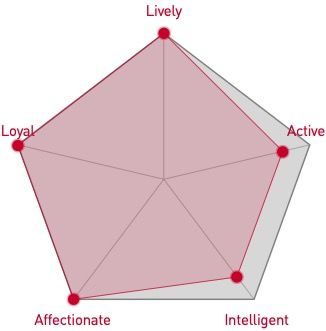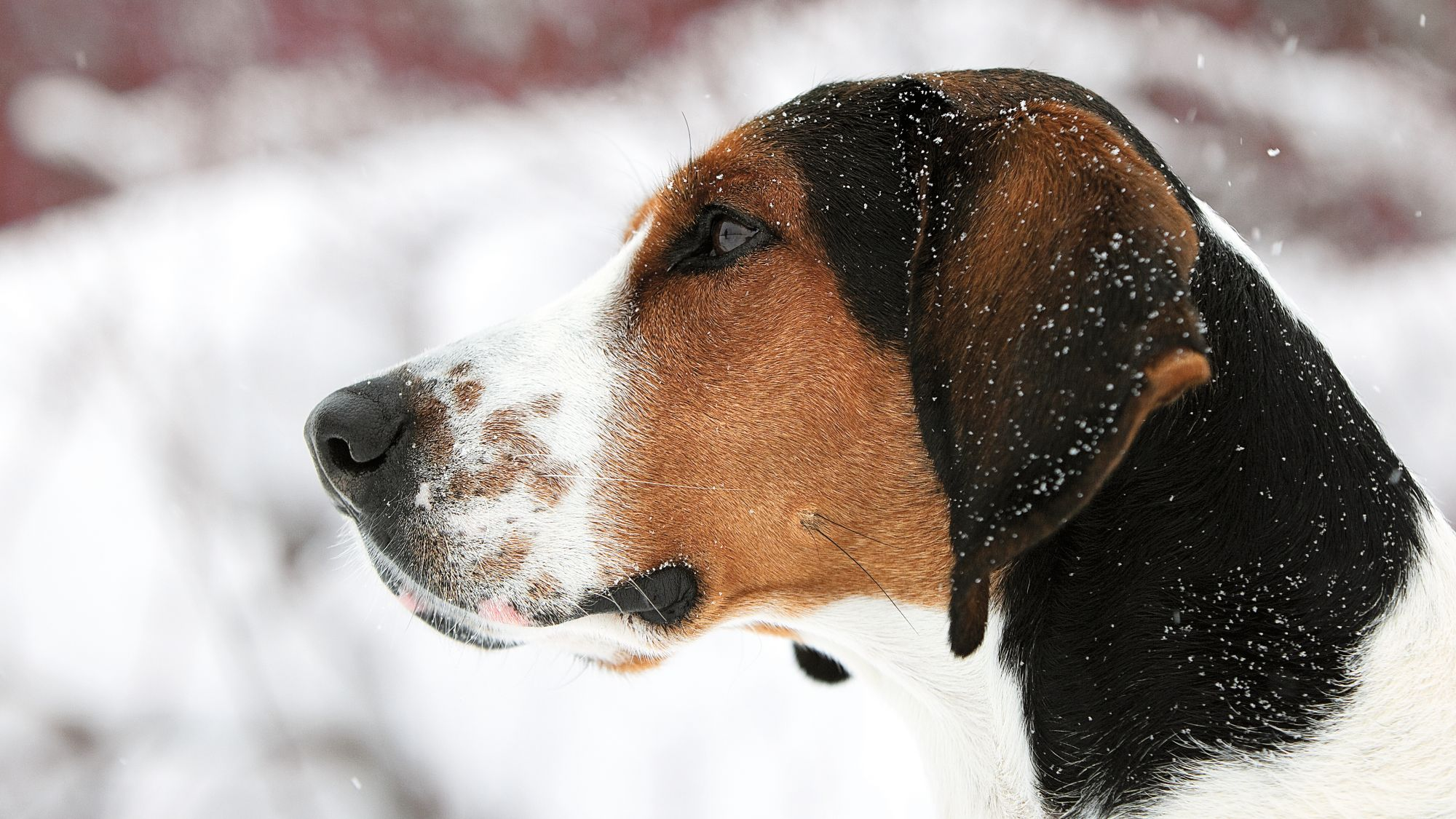
Let's talk Halden Hounds
Originally hailing from South-Eastean Norway - the breed’s name “Halden” refers to a town located on the border of Sweden, the Halden Hound meets important criteria that many look for in a potential furry family member: they’re affectionate, intelligent, easygoing, and especially great with kids, once trained. Although originally developed for their exceptional hunting skills, nowadays Halden Hounds are more popular for being excellent companion dogs. When at work, the Halden Hound boasts high energy and endurance—however, in a home setting, this breed transforms into the inside version of themselves, affectionate and content to practically glue themselves to your feet.Official name: Halden Hound
Other names: Haldenstover
Origins: Norway

| Drooling tendencies |
|
Warm weather? |  |
| Shedding level |  |
Suited to apartment living? |  |
| Physical activity needs (high, low, medium): | Moderate | Kid-friendly? |
|
| Compatibility with other pets | Can stay alone? | 
|
We advise against leaving pets alone for long stretches.
Companionship can prevent emotional distress and destructive behaviour.
Speak to your veterinarian for recommendations.


| Baby age | Birth to 2 months |
| Puppy age | 2 to 12 months |
| Adult age | 1 to 7 years |
| Mature age | 7 to 10 years |
| Senior age | 10 years onwards |
1/7
Get to know the Halden Hound
All you need to know about the breed
With the panoply of favourable qualities that make the Halden Hound highly sought after pets - they are easily trainable, kid-friendly, and sweet-tempered - the breed is, unfortunately for devotees of Haldens, rarely found outside of their native Norway.
One thing is for sure though: the Halden Hound has a fireball spirit and needs sufficient exercise in order to output any wound-up energy. It’s not unheard of to live with them in an apartment, but you will spend a significant amount of time at the park, the forest, or any other wide open space (though be careful to keep them on-lead; with their prey drive, they might be off at the first whiff of something interesting) to help them unwind!
And while you might be quick to categorise them as supremely focused sporting hounds, you might find that your Halden Hound’s eternal life mission is to please you. One particular facet of their temperament is their tendency to become hyper-attached to their owner, which could eventually lead to a kind of canine separation anxiety. But, as long as you build their confidence, they will ease into their ability to be emotionally self-supporting over time.
One important thing to note, given that they were originally developed to hunt small, furry animals, it might be best NOT to add a Halden Hound to any household if you already have a cat or any rodent-type pet. Other than that, this affable breed would enjoy nothing more than becoming fast friends with any other canine family member(s).
2/7
2 facts about Halden Hounds
1. One of the World’s Rarest Pooches
The Halden Hound is considered a rare breed, with its population size historically affected by both World Wars and disease outbreaks. Despite continuing to fall under “at risk” of extinction, fortunately, this is not due to any ongoing serious disaster. There are simply just not enough of them being bred to boost its species numbers.
2. Healthy as a horse
Although they might bear a limited gene pool, the Halden Hound is not usually susceptible to hereditary health problems. Despite the occasional risk of developing elbow or hip dysplasia, the breed is known for being in good shape for most of their life.
History of the breed
Originally from Norway, more specifically from the Halden region in the southern part of the country, the Halden Hound is believed to have been first bred in the 1860’s by a farmer named Hans Larsen Bisseberg. Many years later, the breed is thought to have been crossed with Beagles, Foxhounds, and Harriers, evolving into the doting and affectionate Halden Hound appreciated by devotees today.
The Halden Hound was officially developed as a hunting dog to help catch small game with their heightened sense of smell. Given the extreme winters they endured in Norway, the breed naturally flourished in especially cold climates, especially with their dense undercoats.
While they might have been revered as extraordinary hunting dogs several hundred years ago, the Halden Hound’s primary role as a warmhearted and playful companion dog is what makes them uniquely special and sought after today. They are recognised by the Nordic Kennel Union.

4/7
From head to tail
Physical characteristics of Halden Hounds
1. Head
Dome-shaped head with high set, medium-length floppy ears.
2. Body
Rectangular-shaped body that is hearty, yet not overly heavy.
3. Coat
Short-haired coat, tight and coarse in texture.

5/7
Things to look out for
From specific breed traits to a general health overview, here are some interesting facts about your Halden Hound

6/7
Caring for your Halden Hound
Grooming, training and exercise tips
You would think that Halden Hounds would be much higher maintenance when it comes to grooming, since they come from colder climates and have thick undercoats. However, lucky for your sofa, the breed does not shed an enormous amount. Giving them a good brush once a week is enough for their coat to shine. Teeth should also be brushed daily and nail trimmed regularly. Not known to be lap-dogs, Halden Hounds are extremely high energy, needing at least 1-2 hours of exercise and/or spirited play every day. Training sessions are a great way to empty out their energy reserves, and you can also challenge them with different sorts of mind games or puzzle toys too. Keep your dog on a leash to avoid them chasing anything smaller that crosses their path. While they are not generally aggressive dogs–as with all breeds, early socialisation, with other animals and humans, is strongly recommended.7/7
All about Halden Hounds
In short, yes! Halden Hounds make superb family pets. They’re quite affectionate toward children of all ages, once trained. However, always keep a close watch over your children with your Halden Hound, as with any dog, especially until they learn how to properly interact with animals. Older families or those with a more sedentary lifestyles may opt for a less energetic breed; you would be doing them – and yourself – a huge disservice by keeping them inside too much.
Yes, but only occasionally. This answer may come off as unclear, but keep in mind that the Halden Hound instinctively uses his bark to alert his owner or other dogs in their pack of any alarming presence. Early training can help curb this tendency a little, though maybe not enough to please any close neighbours.
translations.feature.breeds.otherbreeds
Read more on this topic

How your dog's nutrition needs change with age

How to adopt a dog

Things to consider before getting a dog
Sources
1 - Veterinary Centers of America https://vcahospitals.com/
2 - Royal Canin Dog Encyclopaedia. Ed 2010 and 2020
3 - Banfield Pet Hospital https://www.banfield.com/
4 - Royal Canin BHN Product Book
5 - American Kennel Club https://www.akc.org/

